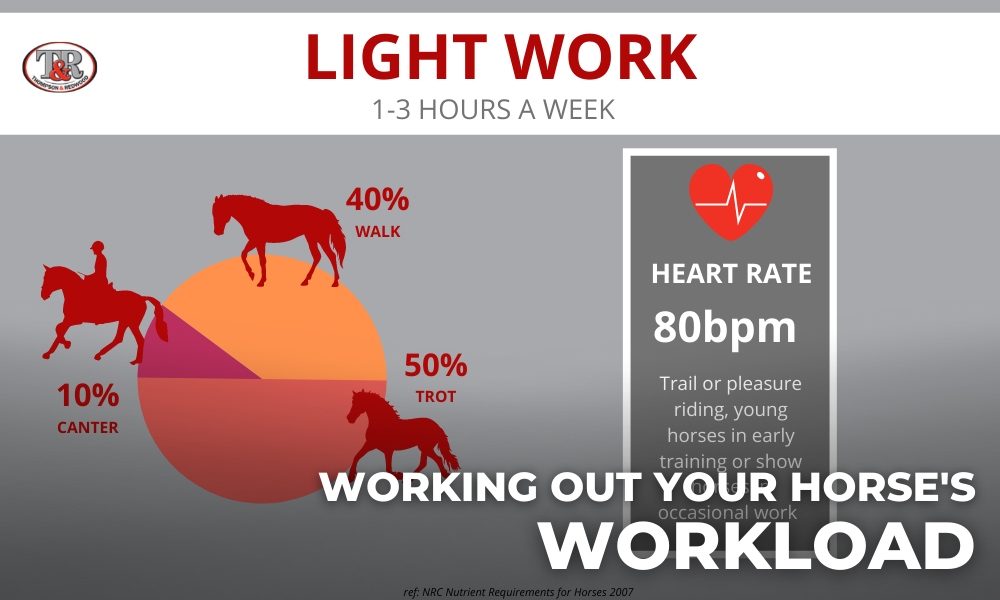
17 Feb Working Out Your Horse’s Workload
Do you know what your horse’s workload is? In this blog post we’re going to look at working out your horse’s workload. Workload is not quite as simple as which discipline they do, or how often they get ridden. Luckily, the National Research Council (NRC) have done the research and hard yards, and developed a guide for defining a horse’s workload.
Feed companies also use these workloads to develop the feeding rates of different feeds, so that nutritional requirements can be met. You can find them on the back of your feedbag, or on our website.
Knowing your horse’s workload is important for:
- Making sure they get their daily nutritional requirements.
- Calculating how much of your feed you need to be giving them, as per the directions on the bag.
Before the competition season really kicks off, it’s a good idea to assess your horse’s workload to make sure they are meeting their nutritional requirements and eating the quantity of feed they need.

THE NRC WORKLOAD GUIDES
The NRC has outlined 4 workloads in their Nutrient Requirements for Horses, which is the resource used for developing and calculating a horse’s diet. The amount of protein, energy, vitamins and minerals your horse requires, changes with how much work they do. The hours are just a guide, but they can helpful in estimating your horse’s workload:
- LIGHT WORK: 1-3 hours a week of work, made up of 40% walk, 50% trot and 10% canter.
- MODERATE WORK: 3-5 hours of work a week made up of 30% walk, 55% trot, 10% canter and 5% jumping, galloping or skill work.
- HEAVY WORK: 4-5 hours of work a week made up of 20% walk, 50% trot, 15% canter and 15% gallop, jumping or skill work.
- INTENSE WORK: Various work durations and speeds, i.e. 1 hour of speed work or 6 to 12 hours of slow work. This is usually only seen in race horses or top level eventers and endurance horses.
*National Research Council (NRC) 2007




BUT WAIT...THERE'S MORE...
The workload guides above are helpful BUT really working out your horse’s workload is not quite that simple.
The hours of work act as a guideline, but accurately defining workload and nutrient requirement is also influenced by many other factors including:
- Heart rate
- Age
- Health status
- Weather conditions like temperature and humidity
- And more!
Taking into account these other factors is especially important for high-level competition and performance horses!
HEART RATE AND WORKLOAD
Heart rate is an indicator that many professionals use to assist in calculating workload as it can explain why two similar horses doing similar work may actually need different feeds.
A horse’s resting heart rate is usually between 36-42 beats per minute (bpm) and increases during work to the levels below:
- LIGHT WORK: 80bpm
- MODERATE WORK: 90bmp
- HEAVY WORK: 110bpm
- INTENSE: 110-150bpm
*National Research Council (NRC) 2007
A horse that may have a lower level of base fitness may actually be working harder than a horse with a higher level of fitness while doing the same work. So the horse with lower fitness may actually use more energy and have a higher heart rate.
Matching their feed and feed rates to your horse’s nutritional requirements is essential for keeping them healthy and performing at their best. If you need help working out your horse’s workload, it’s a good idea to reach out to your nutritionist or vet who can go over all the influencing factors with you.



No Comments